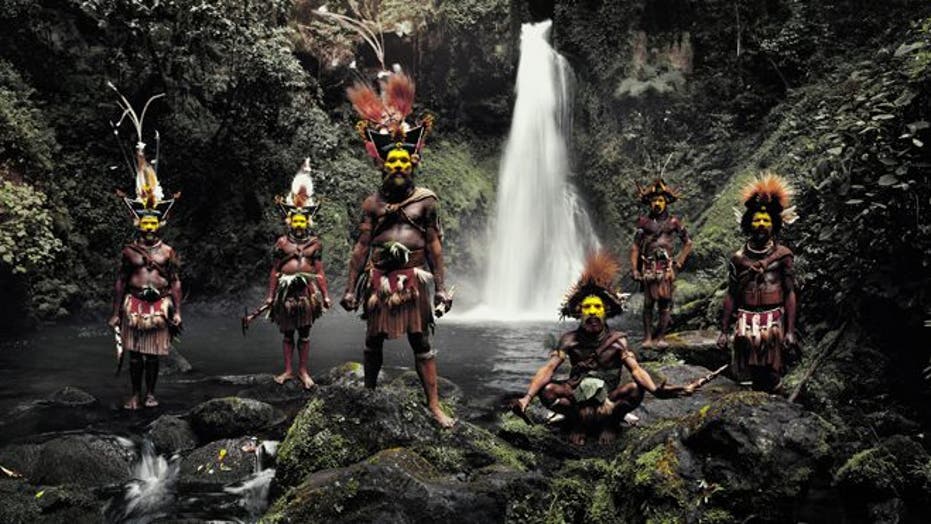To call photographer Jimmy Nelson a globetrotter is an understatement.The son of a geologist for Shell Oil, Nelson grew up on multiple continents, splitting his time between West Africa and a Jesuit boarding school in northern England. Now 46, Nelson began traveling alone at age 11, flying between England and Africa to visit his parents.
When Nelson was 16, he started on a path that would eventually lead him to spend years photographing remote tribal populations all over the world. While visiting his parents in Africa, 16-year-old Nelson contracted cerebral malaria. When he returned to school in England, he was treated with medicine that gave him alopecia areata, a condition that causes hair loss. The day after receiving the medication, all of Nelson’s hair had fallen out.
Nelson said he immediately felt like an outcast. People treated him like a different person. He felt isolated and alone.
“If you’re a 16-year-old looking like an alien, you can imagine it was tough,” Nelson told FoxNews.com.
In an attempt to find a place where his bald head would fit in, Nelson bought a one way ticket to Tibet. He brought with him an old Russian Zenit-B 35mm camera and six rolls of film. Nelson stayed for one year and took 36 pictures.
From that year onward, Nelson was a photographer. For half a decade, he worked in conflict zones and poverty-stricken regions until he decided to settle down with his wife and start a family. Nelson then switched to commercial photography to support his wife and three kids.
Then, in 2008, Nelson’s career took a dramatic turn for the worst. The advent of digital photography and a global recession brought an end to the majority of Nelson’s contracts. Short on work, Nelson was left to redefine who he was as a photographer.
“I felt a little bit like a chef who had learned for the past 35 years how to cook and make a beautiful five course meal and all of a sudden people started wanting hamburgers from me,” Nelson explained.
Lost on what to do next, Nelson asked friends and family for advice.They told him to go back to what he loved most, to return to the same passion that drew him to Tibet decades earlier.
Nelson’s mid-life soul searching led him to spend three-and-a-half years documenting vanishing indigenous cultures all over the world. The resulting photographs have recently been published by teNeues in a voluminous book called Before They Pass Away.
The book profiles 35 different tribes, from the Samburu in Kenya to the Tsaatan of Mongolia, who Nelson has photographed in their traditional garb using a 50-year-old plate camera.The result is a series of stunningly beautiful images that, while they are more artistic than anthropological, offer a window into cultures that are fast evolving away from rural life.
“We as humans love beauty,” said Nelson.“Unless it’s beautiful we won’t look at it. All these people in these cultures are never represented in this way. They are patronized or made as savages.They are not made as icons and put on a pedestal. The motivation behind the project is to invert that.”
Nelson hopes that his work will shed light on all that is lost when tribal communities are faced with modernization.
“Admittedly, I’m very romantic and very idealistic,” Nelson said. “But what I’m trying to say is that these people have something to teach us.”
Click through the slideshow above to view his photographs.

